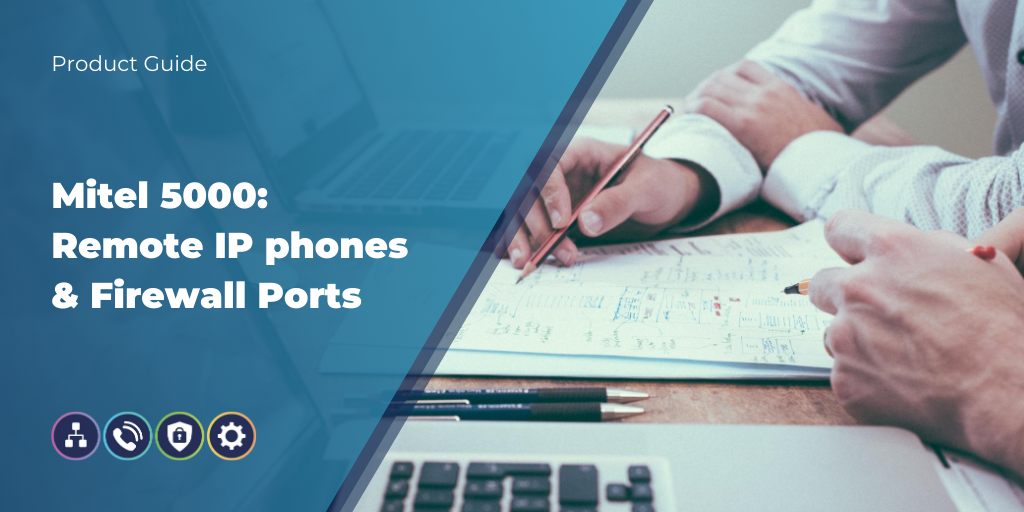Stay service-savvy
Get all the latest news and insights straight to your inbox.

The beauty of owning an IP telephone system, particularly the Mitel 5000 (MiVoice Office 250), is that it gives you the ability to connect IP phones as extensions to the system remotely from any location with an internet connection. This enables you to make internal calls between two locations via the internet, ideal for teleworkers / homeworkers. The call between the remote phone and the Mitel phone system are free (routed over the internet).
Remote phones would be ideal for a small office where a full phone system is not required, and you already have a Mitel 5000 at a larger office. They are also brilliant for staff who need to work from home. Once connected, remote phones can use all the same features as local phones can.
There are a couple of requirements to consider if you wish to connect remote IP phones:
Firstly, you will need to open some ports on your firewall. I have added a helpful table I got from the Mitel 5000 installation manual. It lists all the relevant firewall ports and what they are used for.
|
Name |
Ports |
Description |
|
Dynamic Host Configuration Protocol (DHCP) |
67 and 68/User Datagram Protocol (UDP) |
The 5000 CP and IP phones use DHCP to obtain their IP address, subnet mask, default gateway, TFTP server, and ICP address. It is optional if all network information is statically programmed. |
|
Trivial File Transfer Protocol (TFTP) |
69, 20001/UDP |
The phone uses TFTP to download firmware and applications from the 5000 CP during the boot process. The phone/source port number may be random, but the 5000 CP destination uses the specified ports. The phone ships with the port setting at 0 (recommended). When left at this setting, the phone tries port 20001 followed by port 69. |
|
MiNet |
6800–6802/ Transfer Connection Protocol (TCP) |
The MiNet protocol is for basic call control for Mitel IP phones. |
|
Switch Application Communication (SAC) |
3998 and 3999/ TCP |
The SAC protocol is for phone applications and programmable buttons on Mitel 53xx IP phones. |
|
RTP (86xx phones) |
5004–5007/ UDP |
Real-Time Transfer Protocol (RTP) is for streaming audio. The 5000 CP and IP phones use the specified ports to send to and receive from the peer phone. Each channel requires two port numbers: The even port number is for the RTP protocol, and the odd port number is for the Real-time Transport Control Protocol (RTCP) protocol. The port number value in DB Programming specifies the phone base RTP port range. The first audio channel uses the base port+2. |
|
RTP (52xx/53xx phones) |
50098–50508/ UDP |
|
|
RTP (Processor Module) |
6004–6261/ UDP |
|
|
RTP (Processor Expansion Card) |
6604–7039/ UDP |
As well as this we do recommend your broadband connection has a static public facing IP address as this is what you program into the remote phones to tell them where the telephone system is.
Obviously if this address was to change then all remote phones would need reprogramming as they would lose their connection to the Mitel 5000.
Hosted & PBX Telephony, Cloud Contact Centre, Mitel, Product Guides, Unified Communications & Voice, Articles
Get all the latest news and insights straight to your inbox.